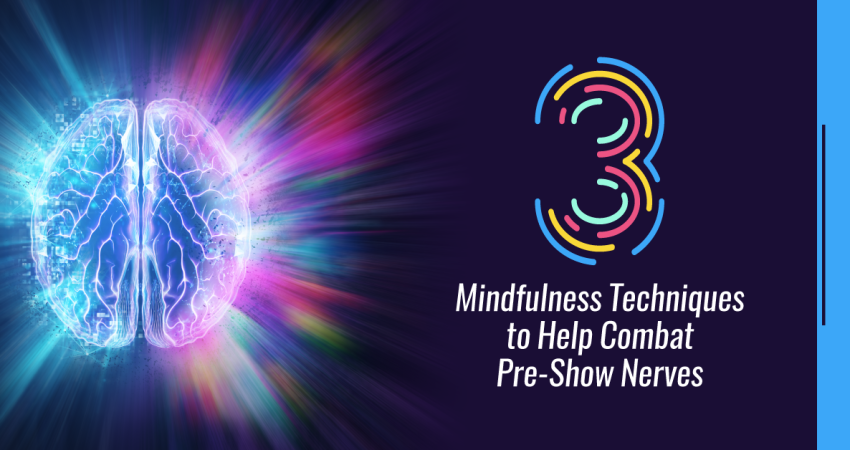Mindfulness means being fully present in this moment, without judgment. Practicing mindfulness is helpful for theater students because it can help them fight the nervousness before the show. Instead of worrying about past mistakes or worrying about what might happen during the show, students can take a few moments to simply be present, inform themselves, and to create a sense of calm.
You can add mindfulness techniques to the warm-up routines before the show, or you can teach these techniques for students to use on their own. At best, it doesn’t take them long. Students do not have to sit and meditate for hours to practice being attentive – they can use these techniques virtually anywhere. Here are three techniques your students (and you!) Should try:
1. Body registration
Ask students to sit or sit comfortably in a chair without bending over. Starting with the toes, make them aware of every part of their body, moving upwards towards their head. This means thinking about that part of your body, noticing any feelings of stress or tension, and relaxing that part of your body. Students can make a short sweep of the body (legs, feet, back, upper back, arms, shoulders, neck, head) or break it down into even smaller sections (toes, heels, ankles, legs). depending on how much time you have to devote to this practice.
Repeated practice of this exercise can help students become aware of where their stress is. Common areas include the jaw (clenching the teeth or holding the tongue at the top of the mouth), the shoulders (flipping them back to release them), the hands (open the fists), and the lower back and buttocks (gentle torso movements may release tension). If they wish, once they have completed their body check, students can do some light stretches to release even more tension in any areas where they notice that they need extra care.
2. Breathing Box
This technique can be done individually or in groups. Breathing in the box has four steps, like the four parts of a box: inhale through your nose for four counts (feeling the air fill your lungs), hold your breath lightly for four counts, exhale through your mouth for four counts, and pause. at the end for four counts, repeating the pattern as many times as you want.
Boxing breathing helps calm students’ nerves (regulating breathing can lower cortisol levels, the stress hormone) and slows down their racing thoughts. It acts as a focal point for students, especially if the idea of meditation is too abstract or difficult for them to understand. Students can focus on the sounds produced by their breathing, observing the movements of their body while breathing, or they can count in silence while exercising. This draws attention to the nerves and moves her to her breath.
3. Liberation of Thoughts
This is one of the most challenging techniques, but with practice, it can deliver incredible results. It is a great way to introduce students to meditation and visualization techniques in a way that is easier to understand and practice.
Ask students to sit or lie down comfortably. Set a timer for one minute. Tell the students to clear their minds and not think about anything. Spoiler alert – this will not happen. As soon as you tell someone not to think about anything, the thoughts immediately fill their brains. That’s ok! This is where the magic happens.
Students will notice that a thought enters their brain (“It’s stupid,” “Itching my nose,” “I’m doing well?” “I’m afraid I’ll stumble and fall on stage tonight”). Once this thought comes to mind, there are two tricks. The first is that students should not be judged because they have the thought or whatever the thought is.
The second trick is to look at the thought and imagine it as something light and airy – a balloon, a butterfly, a bird. Imagine that you take that thought and release it into the sky. Watch him float lightly. Then, when another thought enters their brain, they will release it too, repeating themselves until they really don’t think about anything, or until the timer goes off. This can help students release stress and worries and calm their minds. Once you feel comfortable with the exercise, increase the time with small steps.
For more tips on how to help your students cope with nerves, see this article entitled: Dealing with nerves.
Click here for a bonus exercise: The Mindful Circle
Kerry Hishon is a director, actor, writer and stage fighter from London, Ontario, Canada. She blogs at www.kerryhishon.com.
Want to know more about our latest songs, resources and gifts?
Get on our list!

